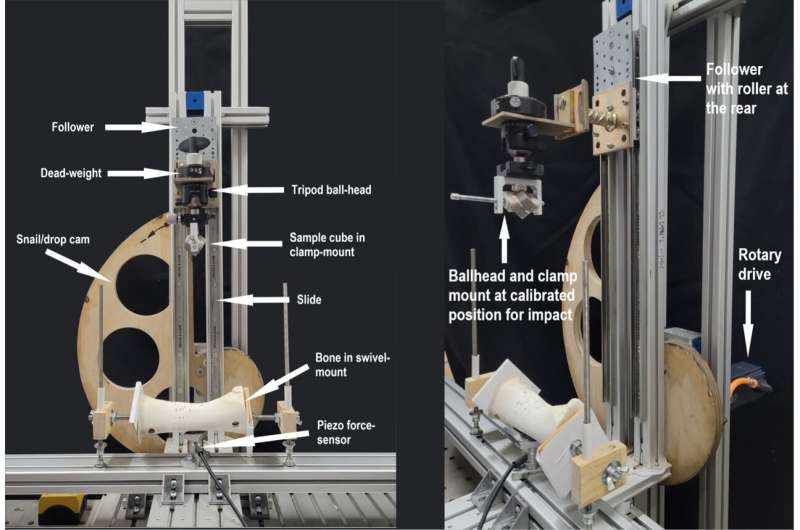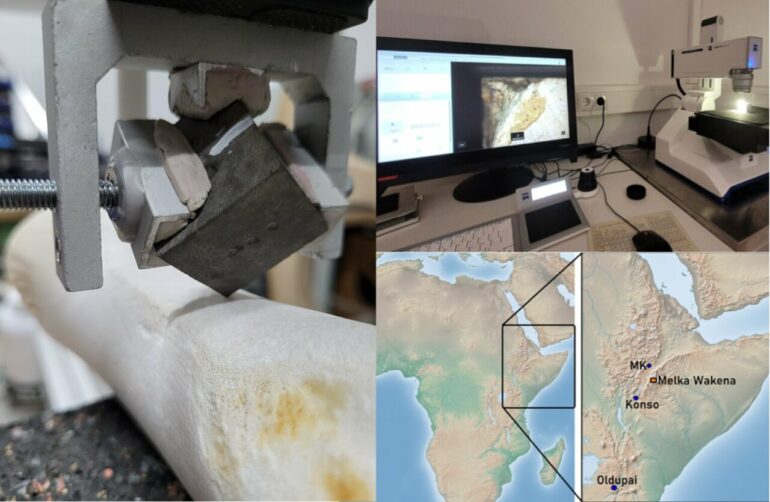An international study reveals how early humans, as far back as 1.5 million years ago, deliberately selected specific stones for their tools in the Ethiopian Highlands. The findings, published in the journal PLOS ONE, provide insights into the cognitive abilities and technological expertise of our ancestors.
At the Melka Wakena site in the Ethiopian Highlands, researchers discovered a wide array of tools. But why were certain types of stone chosen over others? The answer lies in the properties of the rocks. Using state-of-the-art technologies, including robot-assisted experiments and imaging techniques, the team demonstrated that early humans sought an optimal balance between functionality and durability.
The research relied on advanced technologies developed at the Laboratory for Traceology and Controlled Experiments (TraCEr). This laboratory is part of the Archaeological Research Center and Museum for Human Behavioral Evolution, MONREPOS, which is a department of the Leibniz-Zentrum für Archäologie (LEIZA) in Germany.
“Our research shows that the material properties of the stones—such as suitability, quality, and durability—were likely crucial factors in the selection process by early hominins,” explains study leader Dr. Eduardo Paixão from the University of Algarve, Portugal.
“This suggests that they had a deep understanding of their environment and made deliberate choices.”
Dr. João Marreiros, head of the TraCEr Laboratory, adds, “The deliberate selection of materials influenced the surface changes of the tools. This demonstrates that differences in archaeological finds are not random.”

Experimental mechanical setup (SMARTTESTER, manufactured by Inotec AP GmbH, with adaptations made by Walter Gneisinger) at TraCEr laboratory in Monrepos. © Eduardo Paixão, Walter Gneisinger
An international team deciphers early technologies
The study is the result of collaboration between the Interdisciplinary Center for Archaeology and Evolution of Human Behavior (ICArEHB) at the University of Algarve, the TraCEr Laboratory and the Imaging Plattform at LEIZA (IMPALA), and the Hebrew University of Jerusalem. Excavations at the site are led by Prof. Erella Hovers and Dr. Tegenu Gossa.
“These findings open new perspectives on understanding technological innovations in early human history,” says the study leader. “We plan further research to better comprehend the complex decisions made by these early toolmakers.”
More information:
Eduardo Paixão et al, Exploring early Acheulian technological decision-making: A controlled experimental approach to raw material selection for percussive artifacts in Melka Wakena, Ethiopia, PLOS ONE (2025). DOI: 10.1371/journal.pone.0314039
Provided by
Leibniz-Zentrum für Archäologie (LEIZA)
Citation:
Ethiopian Highlands study examines stone tool decision-making process in early human history (2025, January 10)



